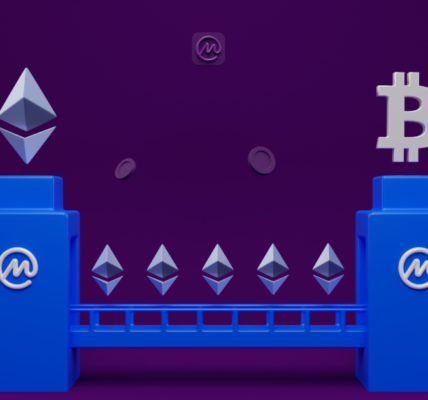Decentralized finance (DeFi) has revolutionized the world of finance by offering permissionless, trustless alternatives to traditional financial systems. However, the rapid growth of DeFi has also attracted the attention of malicious actors looking to exploit vulnerabilities in these protocols. Despite the promise of increased security through smart contracts and blockchain technology, DeFi platforms have been prone to significant hacks, resulting in the loss of millions of dollars.
In this article, we will explore five notorious DeFi hacks, analyze how they occurred, and discuss the lessons we can learn from each incident to improve security in the future.
The DAO Hack (2016)
One of the most infamous hacks in the history of decentralized finance occurred in 2016 with the DAO (Decentralized Autonomous Organization) hack. The DAO was a venture capital fund built on the Ethereum blockchain, where investors could pool funds and vote on investment decisions. The DAO raised over $150 million in Ether, making it one of the most successful crowdfunding projects at the time.
However, a vulnerability in the DAO’s smart contract allowed an attacker to exploit the contract’s recursive calling mechanism. This exploit enabled the attacker to drain one-third of the DAO’s funds, which amounted to around $50 million in Ether at the time.
Key Takeaways from the DAO Hack:
- Smart Contract Audits Are Essential: The DAO hack highlighted the critical importance of conducting thorough audits of smart contracts before deployment. The vulnerability that was exploited had been identified earlier but was not addressed, leading to one of the most significant losses in DeFi history.
- The Need for Formal Governance: The DAO’s governance model allowed for a significant decision to be made quickly, which led to the controversial decision to hard fork the Ethereum blockchain to reverse the hack. While this was done to protect investors, it raised questions about the decentralization of decision-making and governance in the DeFi space.
- Understand the Risks of Recursive Calls: Recursive functions are often used to execute repetitive tasks, but they can lead to vulnerabilities if not properly designed. The DAO hack demonstrated the need for developers to understand and mitigate the risks of recursive calls in smart contract logic.
bZx Protocol Hack (2020)
In 2020, the bZx protocol, a decentralized margin trading platform, suffered two hacks in quick succession. The first hack occurred in February 2020, when an attacker exploited a vulnerability in the protocol’s smart contract. The attacker used a flash loan to manipulate the price of a collateral asset, allowing them to borrow more funds than they should have been able to, resulting in a loss of around $1 million.
Just weeks later, in March 2020, another hack targeted bZx, this time exploiting a different vulnerability in the protocol’s smart contract. The attacker used a flash loan again to manipulate the price of an asset, this time resulting in a loss of $8 million.
Key Takeaways from the bZx Hack:
- Flash Loans Can Be Dangerous: Flash loans, which allow users to borrow large sums of capital without collateral, are a powerful tool in DeFi. However, they can also be used to manipulate market prices and exploit vulnerabilities in protocols. Developers need to build safeguards into their contracts to prevent flash loan attacks.
- Multi-Layer Security Is Crucial: The bZx protocol suffered from multiple vulnerabilities that were exploited in quick succession. This incident demonstrated the need for multi-layer security measures, such as comprehensive audits, real-time monitoring, and built-in circuit breakers to prevent a single vulnerability from leading to significant losses.
- Price Oracles Must Be Secure: In both bZx hacks, price manipulation played a key role in the exploit. Using secure and reliable price oracles is essential for ensuring that the price data feeding into smart contracts is accurate and resistant to manipulation.
Poly Network Hack (2021)
In August 2021, the Poly Network, a cross-chain DeFi platform, was the victim of a massive hack, resulting in a loss of over $600 million in various cryptocurrencies. The attacker exploited a vulnerability in the protocol’s cross-chain communication mechanism, which allowed them to drain funds from different blockchain networks, including Ethereum, Binance Smart Chain, and Polygon.
Interestingly, the hacker later returned the stolen funds, citing their desire to highlight the security flaws in the protocol. The Poly Network hack remains one of the largest hacks in DeFi history, though the funds were eventually returned.
Key Takeaways from the Poly Network Hack:
- Cross-Chain Protocols Are Vulnerable: The Poly Network hack demonstrated the security risks inherent in cross-chain DeFi platforms. These protocols rely on complex systems to communicate across different blockchains, and a vulnerability in the bridge mechanism can lead to catastrophic losses. Developers must thoroughly audit cross-chain smart contracts to prevent such vulnerabilities.
- The Importance of Bug Bounties: While the attacker in this case returned the stolen funds, the Poly Network team did not have a comprehensive bug bounty program in place at the time of the hack. A well-established bug bounty program could have incentivized security researchers to find and report vulnerabilities before they were exploited.
- Decentralization vs. Centralization of Control: Poly Network’s recovery process was somewhat centralized, with the team directly engaging with the hacker to return the funds. This raises questions about the true decentralization of DeFi projects and the role of centralized authority in managing security breaches.
Yearn Finance Hack (2020)
Yearn Finance, a leading DeFi yield aggregator, was also targeted in 2020. The hack occurred when an attacker exploited a vulnerability in the protocol’s smart contract code related to its vault system. By exploiting the vulnerability, the attacker was able to withdraw funds from the vaults, resulting in a loss of around $11 million in various assets.
The Yearn Finance team acted quickly to rectify the issue, and the protocol’s core developer, Andre Cronje, publicly acknowledged the exploit and took steps to strengthen the platform’s security.
Key Takeaways from the Yearn Finance Hack:
- The Risk of Insecure Third-Party Integrations: Yearn Finance integrates with various third-party protocols to optimize yields for users. While this opens up opportunities for higher returns, it also exposes the platform to potential vulnerabilities in third-party contracts. It’s critical for DeFi protocols to conduct due diligence when integrating with external projects and ensure their security is up to standard.
- Security Should Be an Ongoing Process: The Yearn Finance hack highlighted the need for continuous security auditing and improvement. Even after the initial contract audits, the protocol was still vulnerable to exploitation. DeFi projects must treat security as an ongoing process, regularly updating and auditing their contracts to stay ahead of potential threats.
- User Education is Key: While the Yearn Finance team acted swiftly, the incident raised awareness about the importance of user education in DeFi. Users should be informed about the risks of interacting with DeFi protocols and encouraged to take precautions such as diversifying their assets and using secure wallets.
The SushiSwap Rug Pull (2020)
In 2020, the decentralized exchange (DEX) SushiSwap was launched as a fork of Uniswap, offering additional features like yield farming and staking rewards. Shortly after its launch, SushiSwap’s founder, “Chef Nomi,” performed a so-called “rug pull,” withdrawing approximately $14 million worth of assets from the liquidity pool.
The incident sent shockwaves through the DeFi community, as it was seen as a blatant act of fraud. However, after significant backlash, Chef Nomi returned the funds to the community, and the protocol was eventually taken over by a decentralized group of developers.
Key Takeaways from the SushiSwap Rug Pull:
- Rug Pulls Can Erode Trust: The SushiSwap incident was a classic example of a rug pull, where the project’s creator pulls out the funds after the community invests. This highlights the importance of vetting developers and ensuring that DeFi projects are transparent and have clear governance models to prevent such incidents.
- Decentralized Governance Can Prevent Fraud: The SushiSwap community quickly took control of the project after the rug pull and successfully relaunched the protocol. This incident demonstrated the importance of decentralized governance mechanisms in DeFi projects to ensure that no single party has unchecked control over funds or critical protocol functions.
- Transparency Is Essential for Community Trust: The SushiSwap hack showed that transparency in governance, development, and financial operations is key to maintaining user trust. DeFi projects should be open about their operations and governance structures to ensure that users feel secure in their participation.
Conclusion
DeFi protocols have the potential to reshape the financial landscape by providing more accessible, transparent, and decentralized financial services. However, the hacks and exploits outlined in this article serve as stark reminders of the vulnerabilities present in the space.
From smart contract vulnerabilities to governance issues and malicious actors, each hack provides valuable lessons that can help strengthen the security of DeFi platforms. Developers, auditors, and users alike must continue to prioritize security, conduct thorough audits, and ensure that DeFi protocols are built with robust security practices to prevent future hacks.
The DeFi ecosystem is still in its early stages, and while these hacks have been costly, they also present opportunities for growth and improvement. By learning from these incidents, the DeFi community can work together to create more secure, resilient, and trustworthy platforms for the future.




